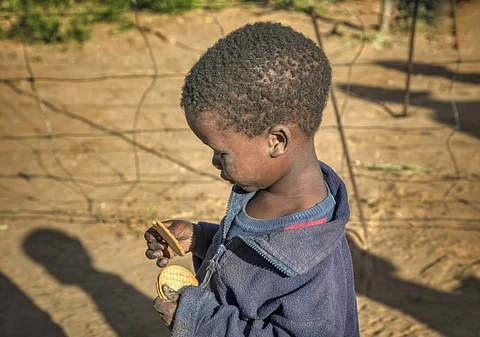

Exposure to extreme heat increases chronic and acute malnutrition among infants and young children in west Africa, said a new study.
Children are particularly vulnerable to heat stress during their early stages of development, noted the study published July 16, 2022, in Journal of Environmental Economics and Management.
If the average global temperature rises by 2 degrees celsius, the average effect of heat exposure on stunting would nearly double, the study noted. This would reverse the progress recorded during the last three decades, researchers estimated.
The researchers from Cornell University linked survey information between 1993 and 2014 to geo-coded weather data from Terrestrial Hydrology Research Group at Princeton University. The study focused on 3,036 children, aged between 3-36 months.
Researchers relied on the household surveys performed by the Demographic and Health Surveys (DHS) Program in five west African countries – Benin, Burkina Faso, Cote d’Ivoire, Ghana and Togo.
Child malnutrition is a major concern in these tropical countries, where the average temperature is around 32°C. These regions of western Africa experience a malnutrition burden among children aged below five years.
The prevalence of stunting is 30.9 per cent, which is higher than the global average of 22 per cent and that of wasting is 6.9 per cent, which is also higher than the global average of 6.7 per cent.
Burkina Faso alone accounted for 21.6 per cent of stunted children, according to a report by West and Central Africa Regional Nutrition Working Group.
High temperatures can inhibit plant growth and hence reduce agricultural production, which in turn can affect children’s development. Many pathogens and vectors thrive in warm temperatures. Heat stress also decreases caloric intake and development among children.
The findings are worrying as the temperatures in west Africa are rising and are expected to continue to do so for several decades, the researchers said.
“We’re talking about children at a very young age that will have changes for the rest of their lives, so this is permanently scarring their potential,” Ariel Ortiz-Bobea, an associate professor and applied agricultural economist at Cornell University told ANI.
Efforts to reduce global poverty are being eroded by our lack of action on climate, he added.
Meanwhile, improved incomes, infrastructure and child care practices during the study period have reduced stunting across the five west African countries by 5.8 per cent points on average.
“While this progress has been welcomed in west Africa and in other low-and middle-income countries, it is occurring against the backdrop of rising temperatures and an increased likelihood of extreme weather events,” John Hoddinott, a co-author of the study, told ANI.
Strategies to reduce child malnutrition will have to consider increased needs for programs during periods of prolonged heat exposure, the researchers concluded.